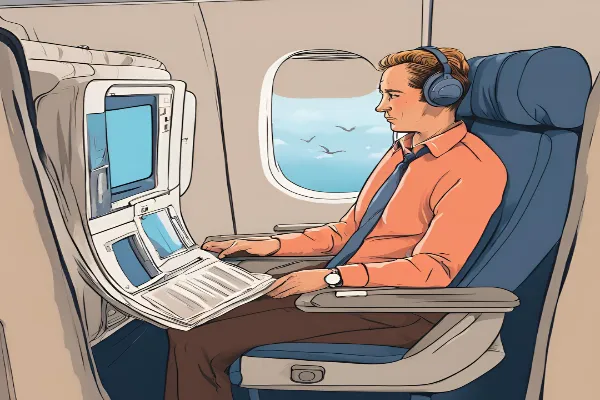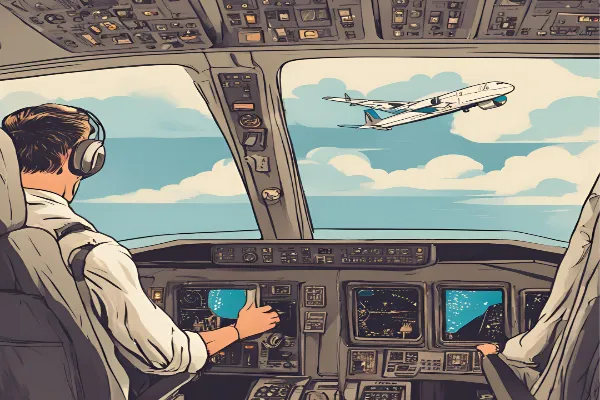How to Get Over Fear of Flying: A Practical Guide to Takeoff

My palms are slick with sweat. My heart hammers a frantic tattoo against my ribs. Just the thought of boarding a plane ignites a wave of panic. If this sounds familiar, you’re not alone. Fear of flying, or aviophobia, is a common anxiety disorder affecting millions worldwide. But what if I told you that freedom from this fear is within reach?
This isn’t a magic bullet article promising to erase your anxieties overnight. However, by understanding the root of your fear and implementing practical strategies, you can transform your flying experience from a white-knuckled ordeal to a manageable journey.
What is a Fear of Flying?
Fear of flying isn’t simply a case of disliking turbulence. Chartered psychologist Dr. Mark Rackley explains it as an “irrational fear” that perceives airplanes as inherently dangerous and best avoided. This phobia triggers a cascade of reactions within the brain. People with a fear of flying develop a generalized belief that all planes are unsafe, creating a mental link between flying and a threat to their life. This association then fuels a cycle of distorted thinking about potential dangers, escalating worry, and the physical symptoms of anxiety – all culminating in the urge to avoid flying altogether.
What are the Symptoms of Aerophobia?
Aerophobia, or the fear of flying, manifests in a variety of ways, both physical and emotional. Before, during, and even after a flight, individuals with aerophobia might experience:
- Intense anxiety and panic attacks: This can feel like a sudden surge of overwhelming fear, accompanied by rapid heart rate, shortness of breath, and sweating.
- Nausea and dizziness: The body’s fight-or-flight response can trigger physical symptoms like nausea, dizziness, and lightheadedness.
- Difficulty concentrating: Anxiety can cloud your thinking, making it hard to focus on anything else during the flight.
- Claustrophobia: The feeling of being enclosed in a small space with limited escape routes can exacerbate anxiety for some people.
- Nightmares and intrusive thoughts: The fear can linger even outside of flying, leading to nightmares or persistent worries about potential dangers during flight.
The Root of Your Fear of Flying
Don’t be fooled by the butterflies in your stomach – the airplane itself might not be the true enemy. Fear of flying often stems from deeper anxieties. Licensed therapist Jules Jean-Pierre of Grow Therapy highlights some common culprits: fear of dying, claustrophobia (fear of small spaces), motion sickness, even worries about catching COVID or being judged by fellow passengers. By pinpointing the root of your anxiety, you can develop targeted strategies to address it. Confronting the specific trigger is far more effective than battling a vague sense of unease. So, take a moment to identify what truly sparks your fear – it’s the first step to a calmer, more enjoyable flight experience.
Understand Your Fear
The first step is acknowledging the source of your anxiety. Is it a fear of heights, claustrophobia, or a lack of control? Identifying the trigger helps tailor your approach. Common anxieties include:
- Fear of turbulence: Turbulence is a normal occurrence caused by air currents. While it might feel unsettling, modern airplanes are incredibly safe and engineered to withstand even severe turbulence.
- Claustrophobia: Feeling trapped in a confined space can be overwhelming. Opting for window seats and practicing relaxation techniques can help alleviate this anxiety.
- Fear of crashes: Statistically, flying is the safest mode of transportation. Understanding these statistics and focusing on the pilot’s expertise can ease your mind.
- Lack of control: Handing over control to someone else can be nerve-wracking. Focusing on activities you can control, like reading or listening to music, empowers you during the flight.
Understanding Airplane Safety to Combat Flight Anxiety
Don’t let sensational headlines cloud your judgment. While plane crashes are undeniably newsworthy, they are statistically incredibly rare. Knowledge is a powerful tool for combating fear. Consider delving into documentaries like “Mayday” (also known as “Air Disasters”). These programs explore past incidents, highlighting the causes and the significant safety improvements implemented in response. It’s a reminder that the aviation industry constantly learns and evolves to prevent similar events from happening again.
Furthermore, you can find videos showcasing the rigorous testing airplanes undergo before taking flight. From simulating extreme turbulence to stress-testing wings, these demonstrations showcase the incredible strength and resilience of modern aircraft. Understanding the lengths airlines go to ensure safety can significantly reduce anxieties about potential mechanical failures.
Practical Strategies for Overcoming Fear of Flying

Knowledge is power. Here are actionable steps to tackle your fear of flying:
- Educate yourself: Learn about airplane mechanics, safety features, and what causes turbulence. Knowledge replaces fear and empowers you with a sense of understanding.
- Gradual exposure: If the thought of a long flight is overwhelming, start small. Take short domestic flights to progressively build your confidence.
- Cognitive Behavioral Therapy (CBT): A therapist can help identify negative thought patterns and replace them with more realistic and calming thoughts.
- Relaxation techniques: Deep breathing exercises, meditation, and progressive muscle relaxation can significantly reduce anxiety levels during flight.
- Desensitization exercises: Visualization can be a powerful tool. Imagine yourself calmly boarding the plane, enjoying the flight, and landing safely. Engage all your senses – picture the sights, sounds, and even the feeling of relaxation in your body.
- Consider medication: For some, anti-anxiety medication prescribed by a doctor can provide temporary relief during flights.
- Talk to the airline: Many airlines offer programs for passengers with a fear of flying. These programs often include pre-flight briefings with pilots or cabin crew to address specific concerns.
Taking Flight with Confidence
The day of your flight has arrived. Here are some practical tips to ensure a smoother journey:
- Plan ahead: Arrive early to avoid the stress of last-minute check-in.
- Pack smart: Bring calming essentials like a book, music, noise-canceling headphones, and a water bottle.
- Dress comfortably: Loose clothing allows for easier movement and promotes relaxation.
- Communicate your anxieties: Let the flight attendants know you have a fear of flying. They are trained to assist anxious passengers and can offer support throughout the flight.
- Focus on what you can control: Choose a distraction – read, listen to music, or write. Engaging your mind takes the focus off your anxieties.
- Practice relaxation techniques: Deep breathing exercises and mindfulness practices can significantly reduce in-flight anxiety.
Can You Cure a Fear of Flying?
While there isn’t a single “cure” for aerophobia, the good news is it’s highly treatable. Through a combination of approaches, you can significantly reduce your fear and approach flying with greater confidence. These strategies include:
- Cognitive-behavioral therapy (CBT): A therapist can help you identify and challenge negative thought patterns associated with flying, replacing them with more realistic and calming beliefs.
- Exposure therapy: This involves gradually confronting your fear in a safe and controlled environment, such as flight simulators or virtual reality programs.
- Relaxation techniques: Deep breathing exercises, mindfulness meditation, and progressive muscle relaxation can significantly reduce anxiety levels before, during, and after flights.
- Medication: Anti-anxiety medication prescribed by a doctor can provide temporary relief during flights, particularly for those experiencing severe anxiety.
By implementing these strategies and working with a therapist, you can transform your fear of flying from a debilitating obstacle into a manageable hurdle. The skies are waiting to be explored – with a little effort, you can take flight with confidence.
Remember, conquering your fear of flying is a journey, not a destination. There will be setbacks, but with consistent effort and the right approach, you can transform air travel from a source of dread into an exciting chapter in your exploration of the world. So, take a deep breath, board the plane, and get ready to soar towards new horizons.